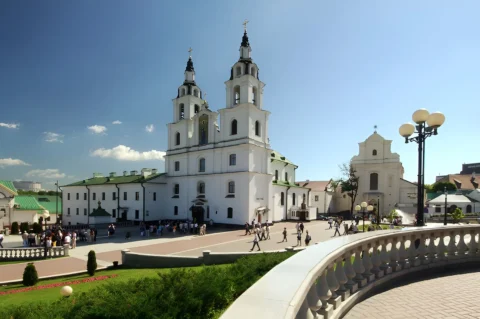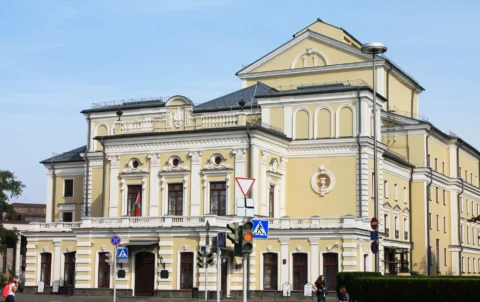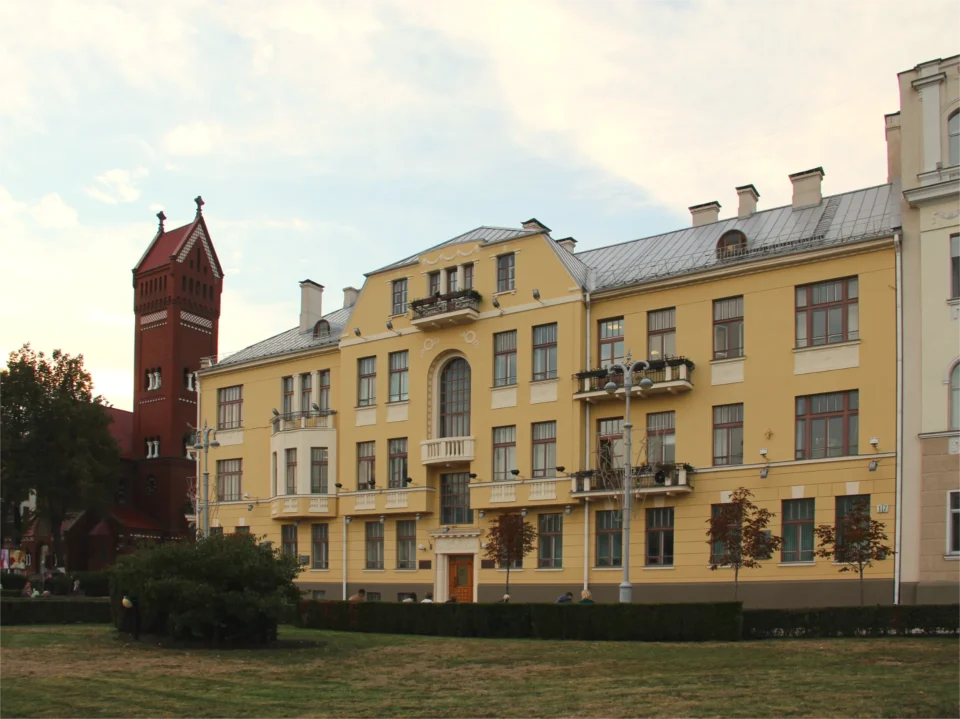
If you’ve seen the “postcard” Minsk and want to discover the city anew, take a closer look at Art Nouveau — a style tucked away in the quiet neighborhoods of the city center. The early 20th century left behind elegant tenement houses with bay windows, mascarons, wrought-iron balconies, and glazed tiles. These buildings don’t catch the eye at first glance, but if you look up, you’ll notice floral motifs, undulating lines, and asymmetries that make Minsk unexpectedly feel very European.
In this guide, we highlight five “intimate” Art Nouveau masterpieces that can easily form a 1–2 hour walking route. We’ll briefly point out what to notice at each building and why they’re interesting for architecture enthusiasts and lovers of fine urban details.
Yadwiga Kostrovitskaya House
Volodarskogo St., 26 / Kirova St., 11
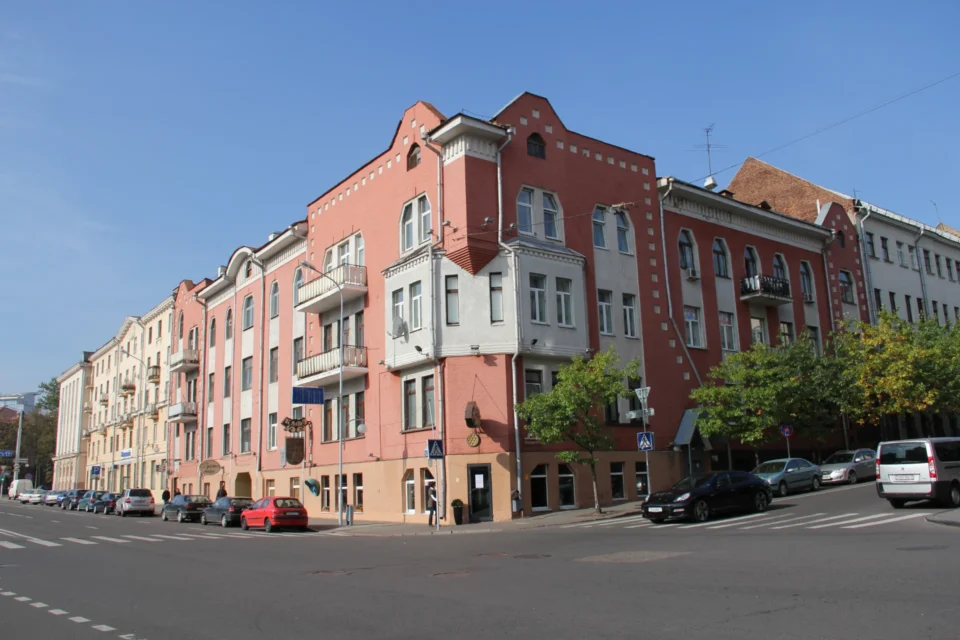
This corner tenement house from the early 20th century is considered one of Minsk’s most elegant Art Nouveau buildings. Built for the burgher Yadwiga Kostrovitskaya, it immediately stood out from its neighbors — with its curved façade lines, tall bay windows, and richly decorated windows. At the intersection of two streets, the building forms an impressive rounded corner with a turret, giving the house an almost fairy-tale appearance.
Notice the stucco with floral motifs, the flowing lines of the balcony railings, and the delicate mascarons. These decorative details are a true “calling card” of Art Nouveau, and here they have been remarkably well preserved. The house is still used for its original purpose — apartments occupy the upper floors, while shops and offices are on the ground level, allowing it to be appreciated in its natural urban context.
Swencitsky House
Karl Marx St., 30 / Lenina St., 30/13
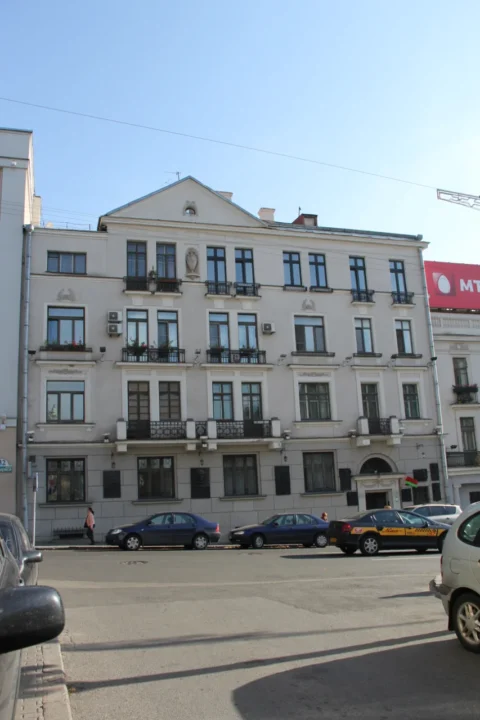
Built in the early 20th century on commission from merchant Stanislav Swencitsky, this house became one of the finest examples of Minsk Art Nouveau with eclectic features. The building occupies a corner lot and unfolds impressively along two streets, allowing its architectural composition to be appreciated from multiple angles.
The façades are richly decorated with stucco: floral motifs, garlands, elegant cartouches, and ornate window surrounds create the impression that the house was designed as an “urban showcase.” Special attention goes to the rounded bay window at the corner, crowned with a decorative dome.
The building once housed rental apartments and shops; today, it accommodates offices and cafés, making it a lively part of the city fabric while retaining its historic charm.
Abrampolsky House
Sovetskaya St., 17

Built in the 1910s for the well-known Minsk merchant Abrampolsky, this house is a rare example in Minsk of Art Nouveau with Neoclassical elements. Its architectural appearance immediately stands out from the surrounding buildings: a high plinth, strict façade symmetry, and smooth decorative lines create an impression of both solidity and refinement.
The house is notable for its elegant stucco decorations featuring geometric and floral motifs, as well as a bay window that gives the façade a subtle sense of movement. The upper-floor windows are framed with curved cornices, adding softness and fluidity to the building.
Originally, the house contained spacious apartments rented to affluent tenants. Today it houses offices and commercial spaces, yet it still retains the spirit of respectable early 20th-century Minsk.
Livshits House
Internatsionalnaya St., 16
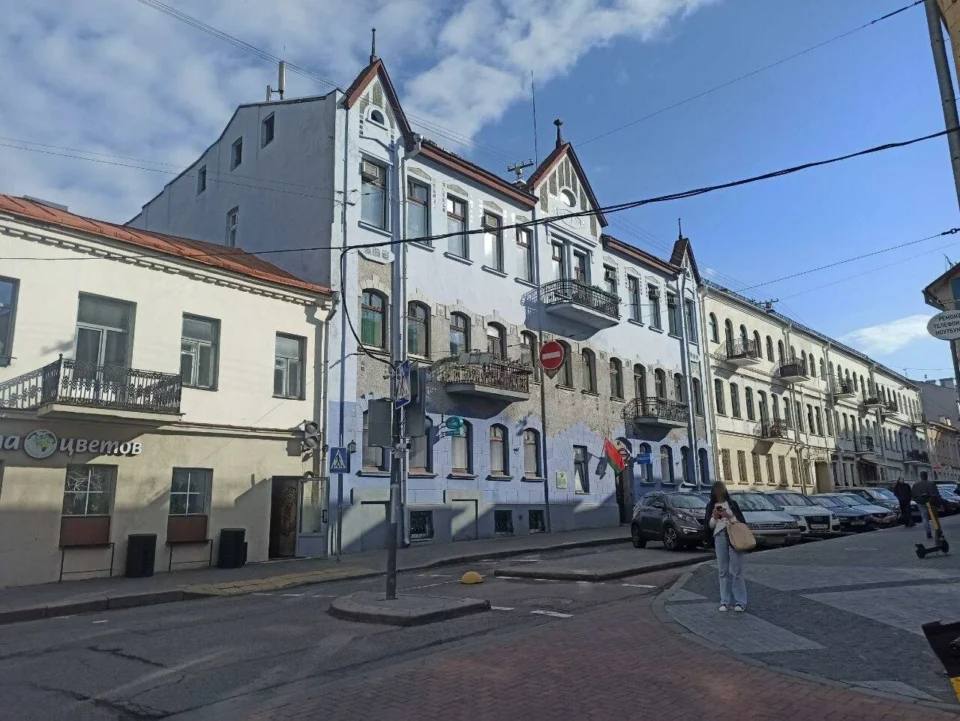
Built in the early 20th century, the Livshits House is one of those Minsk townhouses where Art Nouveau appears in its intimate and cozy form. The building combines smooth façade lines with expressive decorative details, creating the atmosphere of elegant urban living of that era.
The façade is adorned with stucco featuring floral and geometric motifs typical of the Art Nouveau style. Windows of various shapes — rectangular and gently rounded — give the building a special sense of fluidity. Projecting balconies with wrought-iron railings add lightness and individuality.
Originally, the house belonged to merchant Livshits and served as a residential building. Today, it houses various institutions. Despite the change of function, the building continues to delight the eye and remind visitors of the time when Minsk was actively being built up with fashionable European-style houses.
Rappoport House
Gertsena St., 6

The Rappoport House is a rare example of surviving wooden urban architecture in Minsk with elements of the Art Nouveau style. Built in the first half of the 19th century, it changed hands several times and acquired its current appearance in the early 20th century thanks to carved decorative details executed in the spirit of Art Nouveau.
The building is single-story and stands on a high rubble-stone base, giving it a sense of solidity and emphasizing its historical character. The façade is clad in wood, with a prominent decorative band running beneath the windows. The windows are rectangular, framed with simple casings, while the carved wooden elements add individuality and elegance to the structure.
The house’s history is linked not only to K. Rappoport, an Austrian citizen who owned the building in the early 20th century, but also to its role in the everyday life of Minsk residents: it once housed a bakery and a shop selling fresh bread. Today, the house is still in use, and the building remains a valuable reminder of Minsk’s wooden Art Nouveau heritage.
Minsk Art Nouveau of the early 20th century is not only about grand mansions and façades on central streets but also about more modest, sometimes inconspicuous buildings where artistic vision and functionality are combined in remarkable ways. The Yadviga Kostrovitskaya House, Swencitsky House, Abrampolsky House, Livshits House, and Rappoport House—each of them holds a unique story reflecting the atmosphere of its time.
By walking through Minsk with a careful eye, one can discover a whole layer of architectural heritage that doesn’t always appear in guidebooks but can provide a unique experience and inspire new city walks. These buildings serve as a reminder that true beauty is often hidden from plain view, waiting for those willing to notice it.
If you’ve been captivated by the intimate elegance of Art Nouveau, consider exploring Minsk from a completely different angle — through the lens of grand Soviet architecture. Our guide What to See in Minsk: 7 Icons of Soviet Architecture showcases the polar opposite: massive buildings that shaped the modern city center and reveal how dramatically architectural priorities shifted within just a few decades.
Cover photo: Wikipedia, Anna Chervonets
